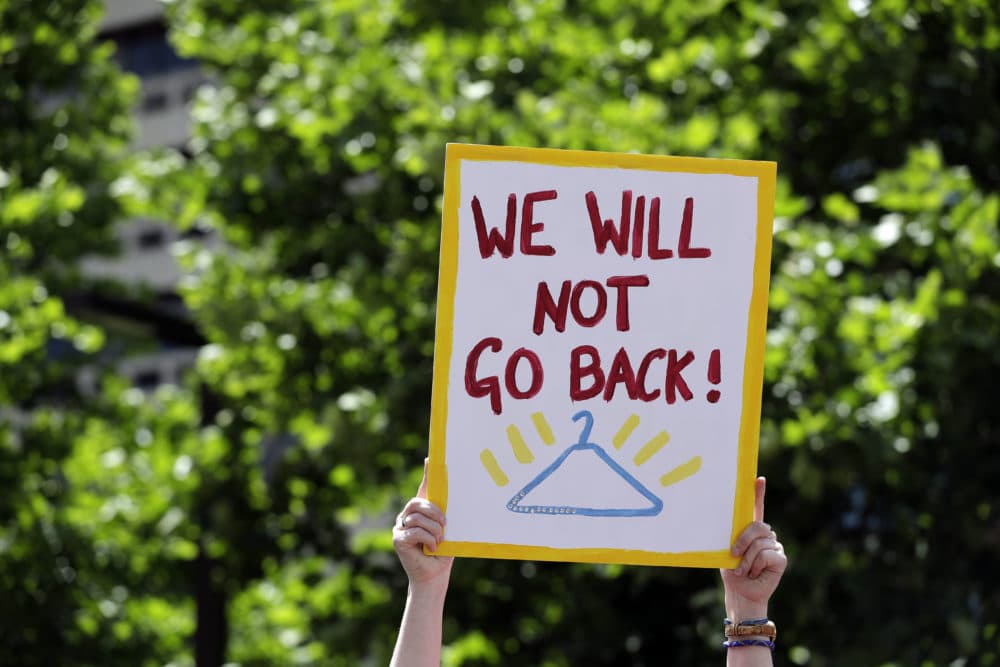Advertisement
Commentary
As The Supreme Court Revisits Roe v. Wade, Prepare For The Ravage Of Abortion Rights

After nearly five decades of tenuous existence, Roe v. Wade turned 47 this January. This week, a newly minted anti-choice majority on the Supreme Court is scheduled to hear its first major abortion case -- June Medical Services LLC v. Russo. The court is poised to quietly eviscerate Roe, and 2020 will mark the beginning of what I call "the pseudo-Roe era." Here’s what it will look like.
The existential threat to abortion rights did not begin when Donald Trump was elected president in 2016. Since the court recognized a constitutional right to abortion in Roe in 1973, that right has been systematically and severely limited by a patchwork of state restrictions: Legislatures have passed more than 1,200 abortion restrictions. In the last nine years alone, states have enacted 516. Even before President Trump reshaped the court, abortion access had become a matter of one’s zip code, with 87% of all U.S. counties lacking an abortion provider by 2008. (It’s closer to 90% now.) The crisis in abortion rights is not new, but it is about to reach unprecedented levels.
This next phase of dismantling abortion rights will begin March 4 when the new conservative Supreme Court will hear a challenge to a Louisiana law requiring abortion providers to have admitting privileges at nearby hospitals. This appeal, June Medical Services LLC v. Russo, involves a law that is nearly identical to the Texas admitting-privileges requirement struck down by the court in 2016 in Whole Woman’s Health. If allowed to stand, the Louisiana law would leave one clinic in that state. There’s little doubt the court will find a way to uphold Louisiana’s law and use the case to severely undermine abortion rights and neuter its abortion precedent. At the same time, the court will likely leave Roe standing -- perhaps in name only. The impact of this “incremental” approach -- gutting Roe without explicitly overruling it — will nevertheless be devastating.
The crisis in abortion rights is not new, but it is about to reach unprecedented levels.
In the short term, the court’s anticipated opinion in June Medical Services might encourage the passage and enforcement of other so-called TRAP laws (targeted regulation of abortion providers) already found in 24 states, a number of which have been blocked by courts -- for now. These restrictions alone will close clinics in areas already suffering from provider shortages. Texas has shown us that many clinics won’t reopen once they have closed.
Assuming the court signals its openness to eviscerating abortion rights bit by bit, states will continue to pass restrictive and unconstitutional laws. For example, more states will likely enact wide-ranging procedural bans, more intrusive ultrasound procedures, “counseling” and waiting period requirements, broad bans on public funding of abortion providers and bans on abortion at even the earliest stages of pregnancy. Twenty-one states already have laws that would greatly restrict access to abortion if Roe is deeply weakened or overturned, and that number may rise. Expect an uptick in efforts to demonize women and confuse the discourse, including through "reason bans" (already enacted in two states) that seek to prohibit selective abortions based on sex, race or fetal anomaly. Look for laws that punish women and their doctors, like Alabama’s near-total abortion ban, which includes a prison sentence for doctors of up to 99 years. The narratives of maternal protection and women as “victims” that have given cover to many restrictions thus far, may be shed as laws become more extreme and more explicitly anti-woman.
Advertisement
Faced with a multitude of ever-more extreme anti-abortion laws, the increasingly conservative Circuit Courts of Appeals and the Supreme Court will likely continue to steadily chip away at Roe until there’s nothing left of it.
The impact on reproductive justice could spread beyond abortion.
In this pseudo-Roe era, abortion rights will become even more extraordinarily and historically polarized. The Center for Reproductive Rights estimates that abortion will be protected in fewer than half of the states. The reproductive health deserts we see in many parts of the country will grow larger. Women in hostile states will confront more obstacles in exercising their rights, and even those with access may harbor dangerous misconceptions about the laws that govern their bodies. With clinics closing and access to comprehensive reproductive healthcare disrupted, unplanned pregnancy rates may rise, and we will see negative effects on maternal and child health. As abortions are pushed later into pregnancy, they will become more costly and dangerous. Some women will take matters into their own hands. The women who will be hurt most will be young, poor, women of color and/or rural women.
The impact on reproductive justice could spread beyond abortion. Abortion law is inextricably linked to issues like assisted reproduction, contraception and criminalization of pregnant women for drug addiction or other fetal harm.
What can be done? It’s an election year, and nobody knows what the future holds for the Supreme Court. But the court, while vital in shaping abortion rights, is not the whole story. The lower federal courts wield enormous influence, and Trump has been packing them with abortion opponents. Senate races will be pivotal in securing abortion rights, regardless of who occupies the White House. A Democratic Senate can confirm pro-choice judges in a Democratic administration, but also moderate judicial picks if Trump is re-elected.
As states are given more leeway in restricting abortion, state legislative and gubernatorial races will be crucial. Just as states have led the charge to undermine abortion rights, they can bolster them. More abortion and reproductive health protections were enacted in 2019 than during the previous decade.
Local activism will also play a significant role. The reality of abortion access largely plays out in our communities. As the Kaiser Family Foundation recently found, barriers to access include social determinants of health, provider shortages, social, cultural and religious barriers, sex education and complex legacies of discrimination. We can effect important change through local initiatives that support the least empowered among us.
While the nation has its eyes on the White House in 2020, those of us who support abortion rights must become more engaged at every level — including in our own backyards.
